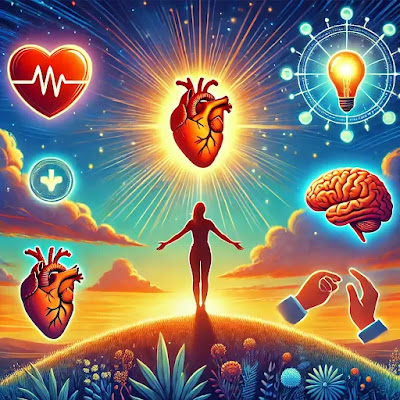1. Mental Health Benefits of Happiness
Stress Reduction:
One of the most significant benefits of happiness is its ability to reduce stress. Happiness helps lower the production of cortisol, the stress hormone, making it easier to manage daily challenges. When you maintain a positive outlook, you’re better equipped to face stressors with a calm and clear mind.
Increased Resilience:
Happy individuals tend to be more resilient in the face of adversity. Their positive mindset enables them to recover faster from setbacks, adapting to challenges without being overwhelmed by negativity. Happiness fosters an emotional buffer that allows you to navigate difficult situations with greater ease.
Improved Emotional Regulation:
Happiness contributes to better emotional control. It helps you stay grounded, manage your emotions more effectively, and respond to situations with patience and understanding. Emotional regulation leads to healthier, more fulfilling relationships and a more balanced life.
2. Physical Health Benefits of Happiness
Stronger Immune System:
The connection between happiness and a healthy immune system is well-documented. Studies show that positive emotions boost immune function, increasing your body’s ability to fight off illnesses. Happiness can help your body produce more disease-fighting antibodies, keeping you healthier in the long run.
Lower Blood Pressure:
Happiness is good for your heart. Positive emotions are associated with lower blood pressure, reducing the risk of heart disease and stroke. People who cultivate happiness tend to have better cardiovascular health, thanks to the relaxing effects of joy and laughter on the body.
Pain Reduction:
Happiness and positive emotions can serve as natural painkillers. When you experience joy or laughter, your body releases endorphins, which are the body’s natural pain relievers. This helps reduce the perception of pain, making you feel more comfortable and at ease.
3. Social Well-being: Building Better Relationships
Improved Relationships:
Happiness not only enhances your own well-being but also has a positive effect on your relationships. Happy people tend to be more empathetic, kind, and patient, making them better friends, partners, and coworkers. By fostering a positive attitude, you create stronger connections with those around you.
Increased Generosity:
Happy individuals are more likely to engage in acts of kindness and charity. Whether it’s helping a friend in need or donating to a cause, happiness encourages generosity. This not only helps others but also strengthens your own sense of purpose and well-being.
4. Cognitive Benefits of Happiness
Better Decision Making:
Happiness leads to improved cognitive function, including better decision-making skills. When you're happy, your brain is better equipped to process information, think critically, and make sound choices. This ability to make informed decisions extends to all aspects of life, from work to personal relationships.
Enhanced Focus and Productivity:
Happiness boosts motivation and energy, which in turn increases focus and productivity. Whether you’re working on a project or managing daily tasks, a positive outlook enhances your ability to stay engaged and accomplish your goals.
5. A Longer Life: The Lifespan Benefits of Happiness
Research suggests that happiness may even contribute to a longer life. People who regularly experience positive emotions tend to live longer than their less happy counterparts. This longevity is attributed to the combined effects of improved physical health, better stress management, and stronger social connections.
6. How to Cultivate Happiness in Your Life
Cultivating happiness is a lifelong journey, but the following practices can help you foster a positive mindset:
Gratitude Practice:
Take time each day to reflect on the things you’re grateful for. This simple practice can shift your focus to the positive aspects of life, making you feel more content and fulfilled.
Mindfulness and Meditation:
Practicing mindfulness and meditation helps you stay present and manage negative thoughts. By focusing on the present moment, you can reduce stress and increase your overall sense of happiness.
Strengthen Social Connections:
Spend quality time with friends and family, nurture your relationships, and create a support network that enhances your happiness.
Physical Activity:
Regular exercise releases endorphins, which help improve your mood and overall sense of well-being. Whether it’s a daily walk or a vigorous workout, staying active is key to cultivating happiness.
Conclusion: Embrace the Power of Happiness
Happiness is far more than just a fleeting emotion. It has the power to improve your mental and physical health, strengthen your relationships, and enhance your cognitive abilities. By cultivating happiness through gratitude, mindfulness, and social connections, you can unlock a healthier, more fulfilling life.
Remember, happiness is not just a destination—it’s a journey. Embrace it, and you’ll find that its power will transform every aspect of your life for the better.

Comments
Post a Comment